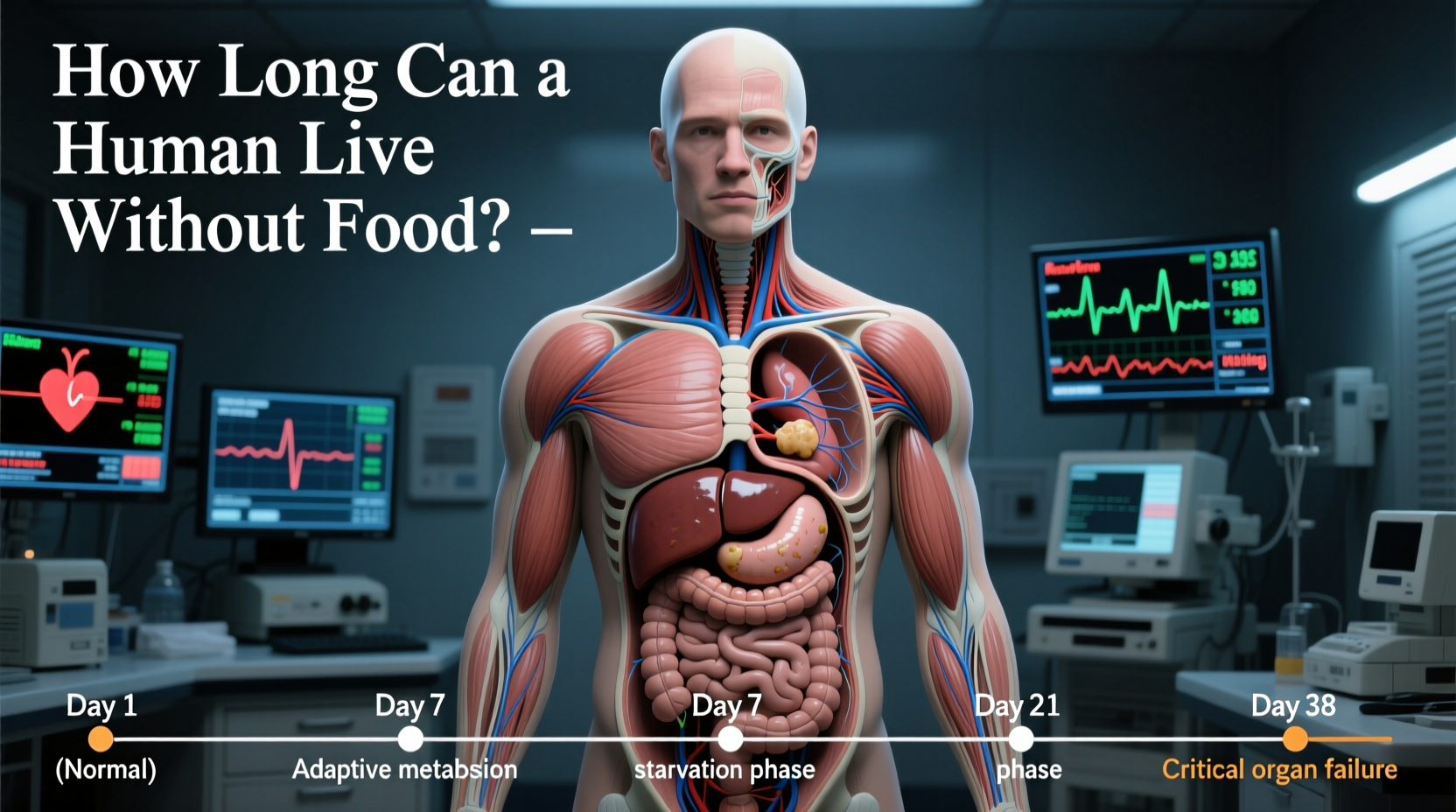The average human can survive approximately 30-40 days without food, but this timeframe varies significantly based on individual health, body composition, hydration status, and environmental conditions. This article explores the science behind survival timelines, critical warning signs, and medical considerations for extended fasting or starvation scenarios.
Understanding human survival limits isn't just theoretical knowledge—it's crucial information that could help you recognize dangerous situations for yourself or others. Whether you're researching for academic purposes, considering extended fasting, or concerned about someone's health, knowing the precise physiological timeline and critical warning signs could make a life-saving difference.
The Science of Survival: What Happens Inside Your Body
When food intake stops, your body initiates a carefully orchestrated survival protocol. Initially, your liver converts stored glycogen into glucose for immediate energy needs. This reserve typically lasts 24-48 hours. After glycogen depletion, your metabolism shifts to ketosis, breaking down fat stores for energy—a process that can sustain basic bodily functions for weeks.
However, protein breakdown eventually becomes necessary when fat reserves diminish, leading to muscle wasting and organ deterioration. This critical transition marks the beginning of life-threatening complications. The human body isn't designed for prolonged starvation, and vital systems begin failing long before complete resource depletion.
| Survival Factor | Impact on Timeline | Medical Significance |
|---|---|---|
| Body fat percentage | Each 10% increase extends survival by 5-7 days | Fat stores provide essential energy during ketosis |
| Hydration status | Dehydration reduces survival time to 3-7 days | Water is critical for metabolic processes |
| Age and health | Chronic conditions reduce survival by 30-50% | Underlying conditions accelerate organ stress |
| Environmental temperature | Cold environments reduce survival by 25% | Body burns more calories maintaining temperature |
Survival Timeline: Hour-by-Hour Physiological Changes
Medical research from the Centers for Disease Control and Prevention shows a predictable progression of physiological changes during starvation:
- 0-24 hours: Glycogen stores deplete; blood sugar stabilizes through gluconeogenesis
- 24-72 hours: Ketosis begins; insulin levels drop significantly; metabolism slows by 15-20%
- 3-7 days: Fat becomes primary energy source; muscle breakdown begins; electrolyte imbalances emerge
- 1-2 weeks: Organ function declines; immune system weakens; cardiac irregularities develop
- 2-4 weeks: Critical protein loss affects heart and respiratory muscles; survival becomes unlikely without intervention
- 4+ weeks: Organ failure becomes inevitable; neurological damage accelerates

Critical Warning Signs Requiring Immediate Medical Attention
Recognizing these symptoms could prevent irreversible damage or death:
- Severe dizziness or inability to stand without assistance
- Persistent heart palpitations or irregular heartbeat
- Confusion, disorientation, or memory loss
- Extreme weakness preventing basic movement
- Significantly reduced urine output (less than 500ml daily)
According to clinical guidelines published in the New England Journal of Medicine, these symptoms indicate advanced starvation where medical intervention becomes critical for survival. At this stage, refeeding syndrome—a potentially fatal condition caused by improper reintroduction of nutrients—becomes a significant risk.
Common Misconceptions About Starvation and Fasting
Many popular beliefs about extended fasting lack scientific basis:
- Myth: The body can indefinitely survive on stored fat alone
Reality: Essential proteins and micronutrients become critically depleted, causing organ failure - Myth: Drinking water alone extends survival indefinitely
Reality: Without electrolytes and minimal nutrients, water-only survival rarely exceeds 30 days - Myth: Religious or spiritual practices can extend survival beyond biological limits
Reality: While mental fortitude affects comfort, it cannot override physiological constraints
When Medical Intervention Becomes Essential
Starvation isn't merely uncomfortable—it creates cascading physiological failures. The World Health Organization identifies these critical intervention points:
- After 14 days without food: Medical monitoring becomes essential
- When body weight drops below 70% of normal: Hospitalization recommended
- With any signs of cardiac irregularities: Emergency medical care required
Attempting to restart nutrition after prolonged starvation without medical supervision risks refeeding syndrome, which can cause fatal electrolyte imbalances. Professional medical guidance is crucial for safe recovery.
Practical Guidance for Different Scenarios
Understanding context matters when evaluating survival timelines:
- Voluntary fasting: Most medically supervised fasts don't exceed 7 days due to health risks
- Survival situations: Prioritize water purification before seeking food
- Medical conditions: Eating disorders require professional treatment, not timeline calculations
For those considering extended fasting for health reasons, consult a physician first. The American Medical Association strongly advises against fasts exceeding 72 hours without medical supervision due to potential cardiac complications.
Can you survive longer without food if you have more body fat?
Yes, higher body fat percentage extends survival time since fat stores provide energy during ketosis. Each 10% increase in body fat typically adds 5-7 days to survival potential, but this advantage disappears once fat reserves are depleted and protein breakdown begins.
How does water intake affect survival without food?
Water is critical for survival. Without adequate hydration, survival time drops to just 3-7 days regardless of food intake. Proper hydration allows the body to maintain essential metabolic processes during starvation, potentially extending survival to 30-40 days when combined with sufficient body fat reserves.
What are the first signs that starvation is becoming dangerous?
Early warning signs include persistent dizziness, heart palpitations, confusion, extreme weakness, and significantly reduced urine output. These symptoms typically appear after 7-10 days without food and indicate that organ systems are beginning to fail, requiring immediate medical attention.
Is it safe to try extended fasting for weight loss?
Extended fasting beyond 72 hours for weight loss carries significant health risks including cardiac complications and refeeding syndrome. The American Medical Association recommends against unsupervised fasting longer than three days. Safer weight loss approaches include medically supervised intermittent fasting or calorie-restricted diets with proper nutritional balance.











 浙公网安备
33010002000092号
浙公网安备
33010002000092号 浙B2-20120091-4
浙B2-20120091-4